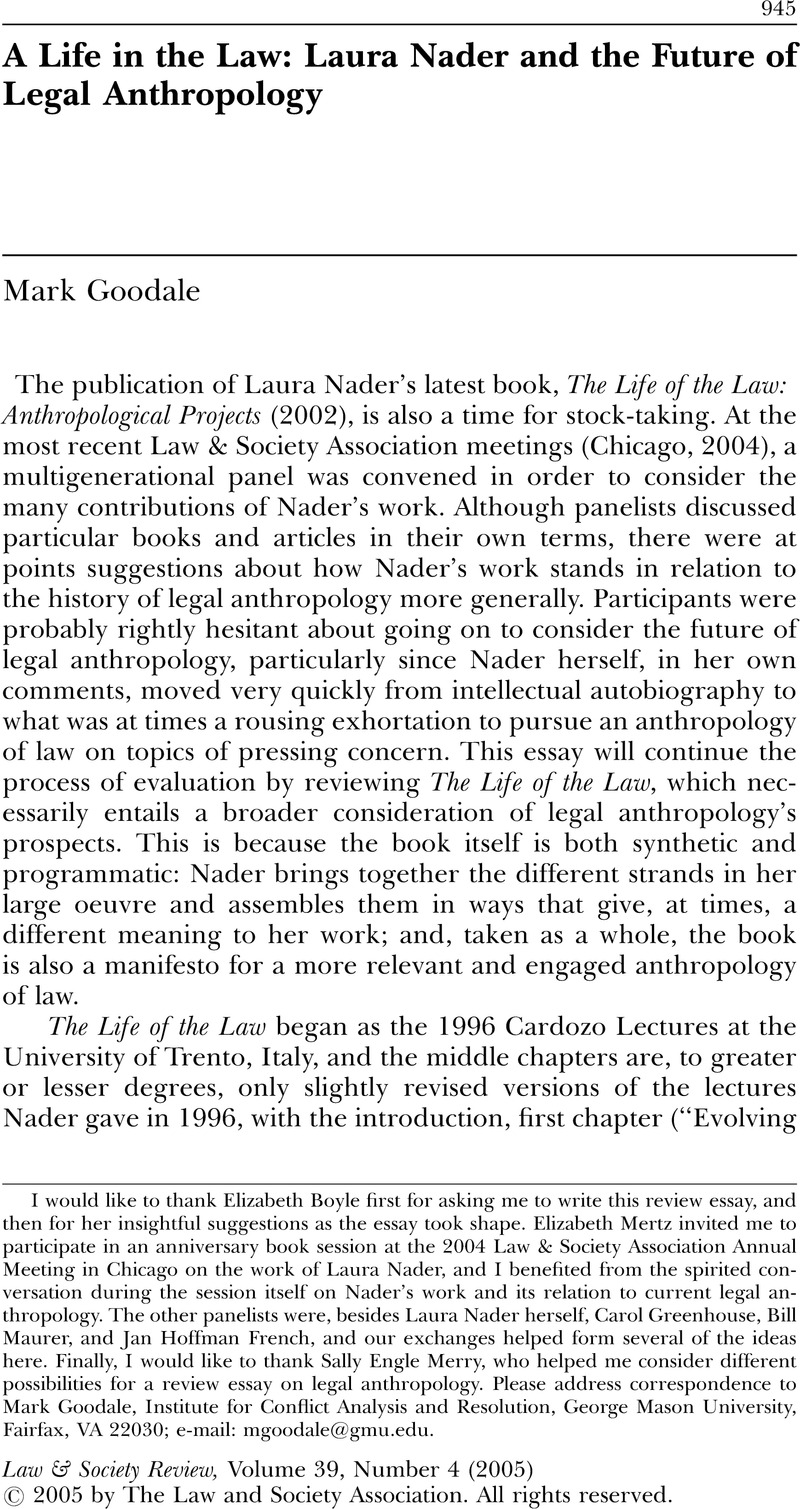Published online by Cambridge University Press: 01 January 2024

I would like to thank Elizabeth Boyle first for asking me to write this review essay, and then for her insightful suggestions as the essay took shape. Elizabeth Mertz invited me to participate in an anniversary book session at the 2004 Law & Society Association Annual Meeting in Chicago on the work of Laura Nader, and I benefited from the spirited conversation during the session itself on Nader's work and its relation to current legal anthropology. The other panelists were, besides Laura Nader herself, Carol Greenhouse, Bill Maurer, and Jan Hoffman French, and our exchanges helped form several of the ideas here. Finally, I would like to thank Sally Engle Merry, who helped me consider different possibilities for a review essay on legal anthropology.